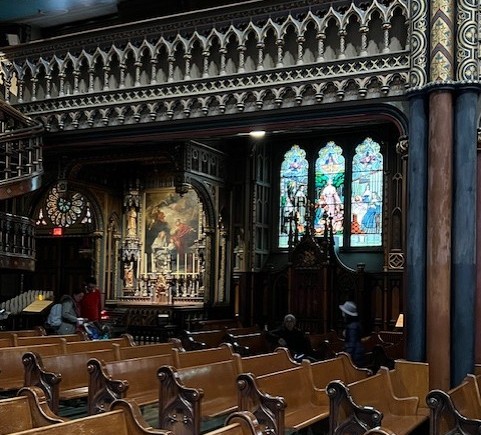
There is a shifting landscape in the American church. An unprecedented trend has emerged. Young women are moving away from the church and its at a faster rate than men. This is a reversal of a pattern where women were typically more religious than men. Gen Z women, in particular, are leaving institutional religion. There are a complex web of factors appearing to be driving this significant change.
For America’s churches, this trend represents a major challenge. Women have long been the foundation of many congregations. Their disaffiliation has implications for community building and the future of faith in America. Understanding the “why” behind this exodus is crucial for both religious institutions and anyone interested in the evolving social fabric of the country.

The Role of Gender and Hierarchy
One of the most frequently cited reasons for this disaffiliation is a growing sense of gender inequality within religious institutions. Many young women today have grown up in a culture that champions female leadership and equality. This is a message that often clashes with traditional church structures.
* Limited Leadership Roles: A significant number of churches, especially within conservative denominations, do not allow women to hold positions of formal authority. This includes such positions as pastors or elders. This “glass ceiling” can create a feeling of cognitive dissonance for women. Especially those who are ambitious and successful in their professional lives but are told they cannot lead in their place of worship.
* Complementarianism vs. Egalitarianism: The theological debate over gender roles, often framed as complementarianism (different, complementary roles) versus egalitarianism (equal and can serve in all roles), is a major point of contention. Many young women find complementarian views outdated and restrictive, viewing them as inherently sexist.
* Feeling “Less Than”: The emphasis on a “biblical manhood” model in some churches can leave women feeling voiceless and secondary. For many, it’s difficult to reconcile a deep personal faith with an institutional environment that they perceive as treating them as less than equal.

Photo Courtesy of AP
A Reckoning with Social Issues
Young women are often at the forefront of social change. It’s a misalignment between their personal values and their church’s stances on key issues is a powerful driver of disaffiliation.
* LGBTQ+ Rights: The negative treatment of gay and lesbian people is a frequently cited reason for young people leaving their childhood religion. As younger generations become more accepting and have close friends who identify as LGBTQ+, they are less willing to remain in institutions that condemn or exclude them.
* Abortion and Reproductive Rights: With the increasing political salience of abortion, the firm pro-life stance of many churches creates a significant barrier for young women who are overwhelmingly pro-choice. The church’s position on this issue can feel like a direct challenge to their autonomy and personal beliefs.
* Purity Culture: The legacy of “purity culture” is another factor. Many women who grew up with an overemphasis on sexual purity tied to their worth and holiness are now questioning whether the church was ever truly invested in their spiritual well-being. They believe that it may have been strictly to follow a set of restrictive rules.
The Problem of Emotional Labor and Burnout
The long-standing reliance on women as the primary volunteer force within the church is also a contributing factor to burnout.
* The “Built-in Volunteer Force”: From running children’s programs to organizing social events and leading Bible studies, women have traditionally shouldered a disproportionate amount of the logistical and emotional labor of church life.
* Feeling Used, Not Empowered: For many women, this labor can feel unappreciated and unempowered, especially when it’s not accompanied by opportunities for formal leadership or decision-making. The expectation that women will constantly give their time and energy without being treated with the same dignity and respect as men is a source of frustration.

Looking to the Future
The exodus of young women from the church is not a simple issue with a single cause. It’s a multifaceted problem that stems from a deep-seated “cultural dissonance” between traditional religious institutions and the values of a new generation. While some may view this trend as a sign of spiritual decline, others see it as an opportunity for religious spaces to re-evaluate their structures, beliefs, and social engagement. The trajectory of this trend will likely have lasting impacts on the future of faith in America.
MUST READ
Tennis Queens Reign Supreme: The Elite Women Earning Over $30 Million in 2025 – Athletica Sports
Flag Football Will Be Part of the LA28 Olympics Sports Competition – Athletica Sports

Viorica Bruni
Editor Athletica Sports and Content Creator News Talk Florida






